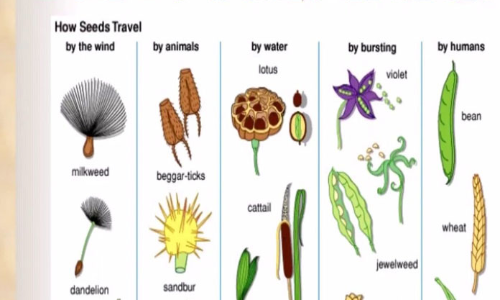Live
- Akhilesh Yadav To Contest Kannauj Lok Sabha Seat, Confirms Samajwadi Party Leader
- Nitin Gadkari Collapses On Stage At Maharashtra Election Rally
- Naveen unveils BJD roadmap to make Odisha No.1
- Daily Forex Rates (24-04-2024)
- Yoga Pranayama Exercises for Heart Health
- DSP dies in gun misfire at CRPF camp in Bhadrachalam
- World Malaria Day 2024: Date, History, Significance, and Importance
- International Noise Awareness Day 2024: Date, History, Significance, and Essential Information
- Sushant Singh Rajput's pic with Dhoni and baby daughter goes viral, fans get emotional
- Harish Rao challenges Congress govt. to implement loan waiver by August 15
Just In

Throughout summer, and especially towards the end of it, collect seeds wherever you go the beach, mountains, desert, your backyard, a farm, the park, neighboring fields, etc Look for burdock, cockleburs, tick seeds, acorns, dogwood, berries, dandelions, cattails, seeds from box elder, maple, and ash trees, milkweed, and grasses
Throughout summer, and especially towards the end of it, collect seeds wherever you go – the beach, mountains, desert, your backyard, a farm, the park, neighboring fields, etc. Look for burdock, cockleburs, tick seeds, acorns, dogwood, berries, dandelions, cattails, seeds from box elder, maple, and ash trees, milkweed, and grasses. To help beef up your seed collection, you can buy fruits and vegetables, such as coconuts, avocados, and apples, from the grocery store and add their seeds to your collection. Seeds come in a variety of shapes and sizes, and their physical appearance is based greatly on how they move away from the parent plant.
What You Need: Electric fan, Pieces of fuzzy cloth (washcloth, faux fur), Tub of water
What You Do: Observe each of your seeds carefully. Touch them, feel how heavy or light they are. Notice their color and texture. Based on your observations, take a guess as to how you think each seed might travel to find a place of its own to grow. Now test your predictions using the following methods.
Turn on the electric fan and one by one drop your seeds into the wind current being generated by the fan. How did each seed do? Did the seed drop straight down, of did it move with the current? If dropped straight down, what does this tell you about the seed traveling by wind? Of your seeds that traveled in the current, which ones traveled the farthest? Did they all move the same way? Seeds that can float in air currents are seeds that use wind as a means of transportation.
Now take your seed collection and place them on a table. Take the fuzzy piece of cloth and touch each seed (you can also try brushing it lightly against the seeds). How many stuck to the cloth? Do particular seeds with certain features stick better than other seeds? Seeds that can stick to the fuzzy cloth are often called hitchhikers because they attach themselves to furry animals roaming through the area.
Place your seeds in the tub of water. How many float well? Try submerging each seed that floated. Do they still float as well as they did before being submerged? The better a seed can float (even after it is submerged in water), the better this seed can travel by water, no matter how rough the waves may be.
What about the seeds that are hidden in brightly coloured and sweet tasting fruit, such as berries and apples? Why do you think they are colourful and sweet? These seeds encourage animals to eat them. The seeds travel inside an animal until they are expelled at some later time. In fact, many seeds cannot grow unless they have passed through the digestive track of an animal.
What Happened: Most of your seeds probably traveled by more than one method. The more methods a seed can travel, the easier it is for it to find a place to grow. Think about the environments where you found these seeds or where the store-bought seeds probably originated.
Did you find the seeds to travel well for the environment they came from? Any surprises?

© 2024 Hyderabad Media House Limited/The Hans India. All rights reserved. Powered by hocalwire.com







